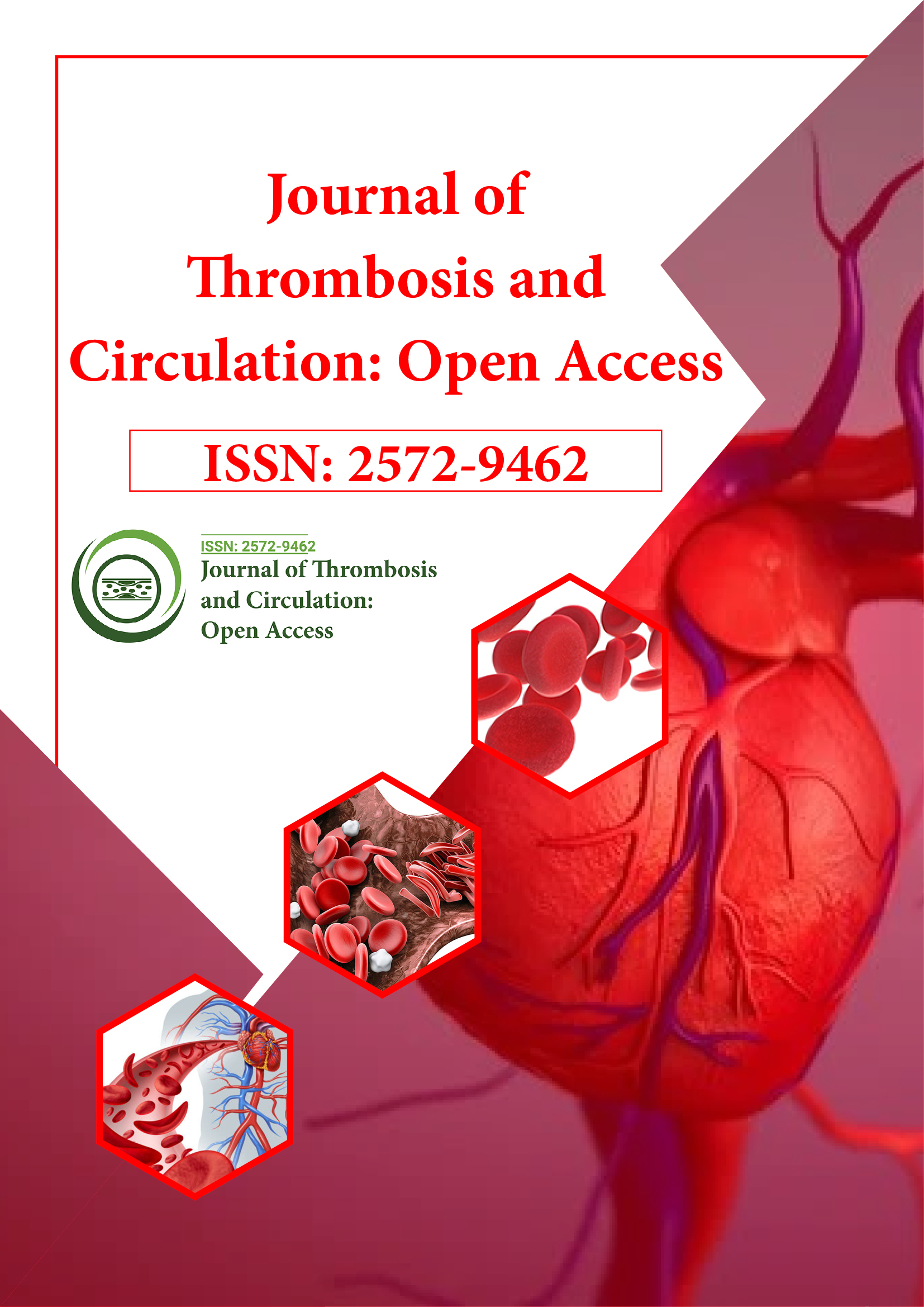Indexed In
- RefSeek
- Hamdard University
- EBSCO A-Z
- Publons
- Google Scholar
Useful Links
Share This Page
Journal Flyer

Open Access Journals
- Agri and Aquaculture
- Biochemistry
- Bioinformatics & Systems Biology
- Business & Management
- Chemistry
- Clinical Sciences
- Engineering
- Food & Nutrition
- General Science
- Genetics & Molecular Biology
- Immunology & Microbiology
- Medical Sciences
- Neuroscience & Psychology
- Nursing & Health Care
- Pharmaceutical Sciences
Perspective - (2023) Volume 9, Issue 5
Preventing Complications: Iliofemoral Deep Vein Thrombosis Treatment Options
Liang Tao*Received: 18-Aug-2023, Manuscript No. JTCOA-23-23285; Editor assigned: 21-Aug-2023, Pre QC No. JTCOA-23-23285 (PQ); Reviewed: 06-Sep-2023, QC No. JTCOA-23-23285; Revised: 13-Sep-2023, Manuscript No. JTCOA-23-23285 (R); Published: 21-Sep-2023, DOI: 10.35248/2572-9462.23.9.244
Description
Deep Vein Thrombosis (DVT) is a condition characterized by the formation of blood clots in the deep veins of the body, typically in the legs. When these clots occur in the iliofemoral region, a critical area responsible for returning blood from the legs to the heart, it is referred to as acute iliofemoral deep vein thrombosis. This condition can have severe consequences, including the risk of pulmonary embolism and long-term complications such as post-thrombotic syndrome. Fortunately, advancements in medical technology and treatment strategies have significantly improved the management of acute iliofemoral DVT.
Iliofemoral DVT is a more serious form of DVT because it affects the major veins in the pelvis and thigh. Blood clots in these areas can obstruct blood flow, leading to pain, swelling, and increased pressure in the leg. Moreover, there is a higher risk of clot fragments breaking loose and traveling to the lungs, causing a potentially life-threatening pulmonary embolism.
Traditionally, treatment for acute iliofemoral DVT primarily involved anticoagulant medications (blood thinners) to prevent clot growth and formation of new clots. While this approach remains a cornerstone of treatment, modern interventions have expanded the treatment armamentarium to achieve better outcomes.
Advanced treatment options
Catheter-Directed Thrombolysis (CDT): CDT is a minimally invasive procedure in which a catheter is inserted into the affected vein under imaging guidance. Through the catheter, a clot-dissolving medication (thrombolytic agent) is directly delivered into the clot. This targeted approach can rapidly dissolve the clot, improving blood flow and reducing the risk of post-thrombotic syndrome. CDT is particularly effective in acute iliofemoral DVT cases.
Mechanical thrombectomy: Mechanical thrombectomy involves the use of specialized devices to physically break up and remove the clot. This technique can be combined with CDT for optimal results, especially in cases with large or stubborn clots. Mechanical thrombectomy can quickly restore blood flow, relieve symptoms, and reduce the risk of complications.
Stent placement: In some instances, iliofemoral DVT can lead to vein blockage or severe damage. In such cases, stent placement may be necessary. A stent is a small metal or plastic tube inserted into the vein to keep it open and allow for normal blood flow. This procedure can be a vital component of treatment, particularly when the vein's structure is compromised.
Compression therapy: After clot removal or dissolution, compression therapy with compression stockings is often recommended. These stockings help prevent blood from pooling in the legs, reduce swelling, and alleviate discomfort. They are a crucial component of long-term management and prevention of post-thrombotic syndrome.
Anticoagulant therapy: Anticoagulant medications remain essential for preventing recurrent clots. Patients with acute iliofemoral DVT typically require a more aggressive anticoagulation regimen, which may include novel anticoagulants that do not require frequent monitoring.
The treatment of acute iliofemoral deep vein thrombosis has evolved significantly in recent years, offering patients more effective and less invasive options. The combination of catheterdirected thrombolysis, mechanical thrombectomy, stent placement, and anticoagulation therapy has provided a multifaceted approach to managing this complex condition.
Early diagnosis and intervention are crucial to achieving the best outcomes. Patients should be aware of the signs and symptoms of DVT, such as leg swelling, pain, and redness, and seek medical attention promptly if these symptoms occur. With advances in medical technology and improved treatment strategies, individuals diagnosed with acute iliofemoral DVT can receive timely and comprehensive care, reducing the risk of complications and enhancing their overall quality of life.
Citation: Tao L (2023) Preventing Complications: Iliofemoral Deep Vein Thrombosis Treatment Options. J Thrombo Cir. 9:244.
Copyright: © 2023 Tao L. This is an open-access article distributed under the terms of the Creative Commons Attribution License, which permits unrestricted use, distribution, and reproduction in any medium, provided the original author and source are credited.
